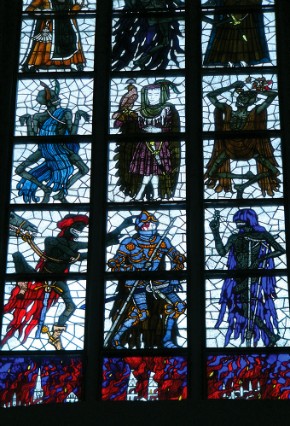Naming the shadows: My visit to Lbeck

On their honeymoon in 1953 my parents visited Lübeck, Germany, to see St. Mary’s Church, the world’s highest Gothic cathedral built of brick. My father wanted to show my mother where he was baptized and confirmed. Eleven years earlier, on Palm Sunday 1942, an Allied bombing raid had attacked this jewel in retaliation for the Nazi bombing of England’s Coventry Cathedral. When my parents visited, repairs were under way. They could look up past the soaring arches and see the sky.
Among the many works of art destroyed in the firebombing was a painted frieze that wound around four walls of the confessional chapel. It depicted a common medieval theme: the dance of death, or Totentanz.
In the painting, death dances with representative citizens, following a strict hierarchy. Death begins with the pope and the emperor, and then moves on to the cardinal and king. He slips a bony hand in the crook of the bishop’s arm, then the mayor’s. Death is all motion, leaping off the ground while the citizens of Lübeck stand stiffly resisting the inevitable: merchant, bailiff, nobleman, knight, doctor, moneylender, monk, hermit, farmer, sexton, peasant, maid, and finally, an infant in her cradle. For those who entered St. Mary’s chapel for confession, the cityscape of Lübeck depicted in the background brings the point even closer to home. The painting includes an exhortation to lead a righteous life while time remains. It is part of a genre of art that spread during outbreaks of the plague; in fact, a plague claimed thousands of lives in the vicinity of St. Mary’s only a year after the painting was installed.




